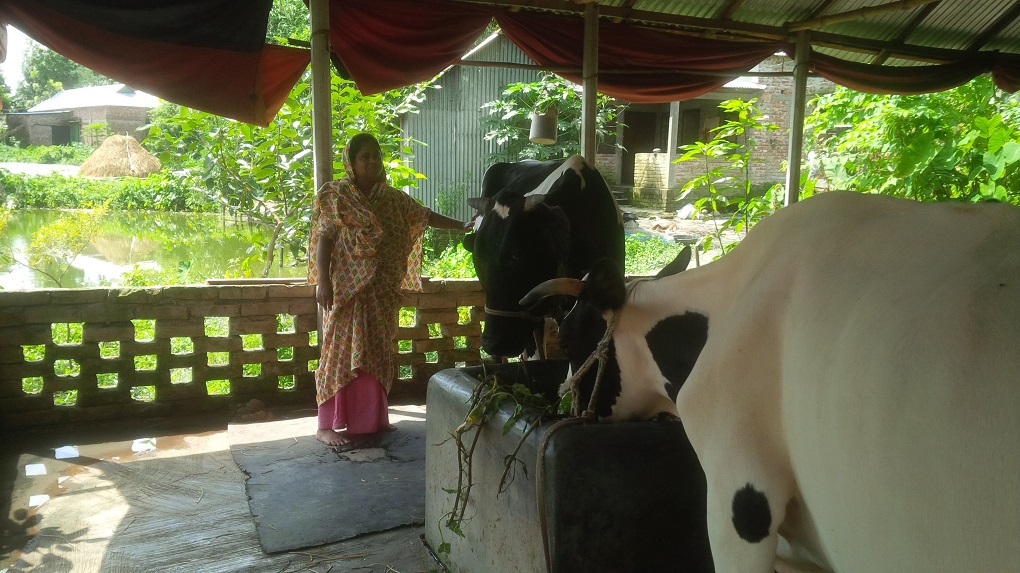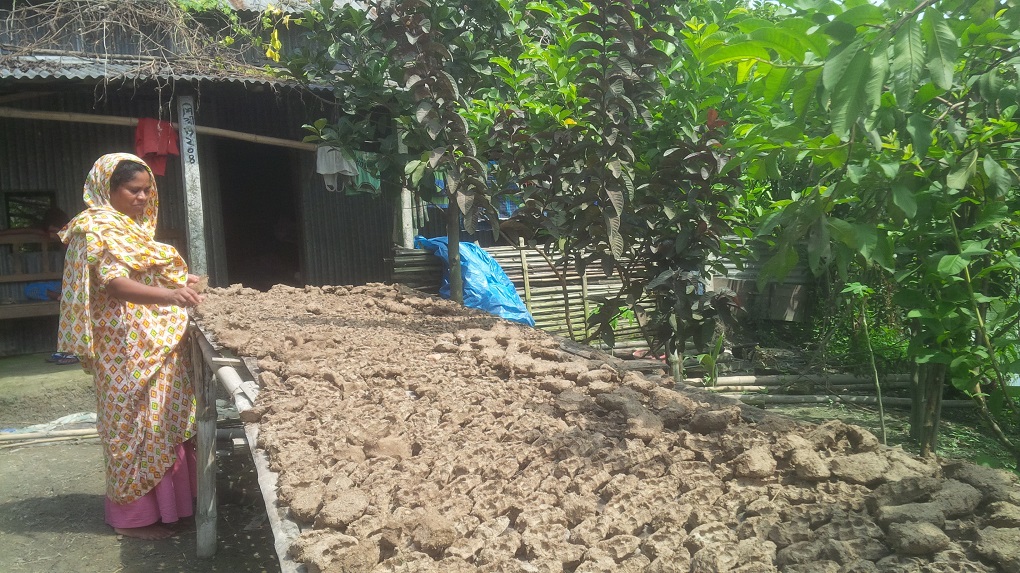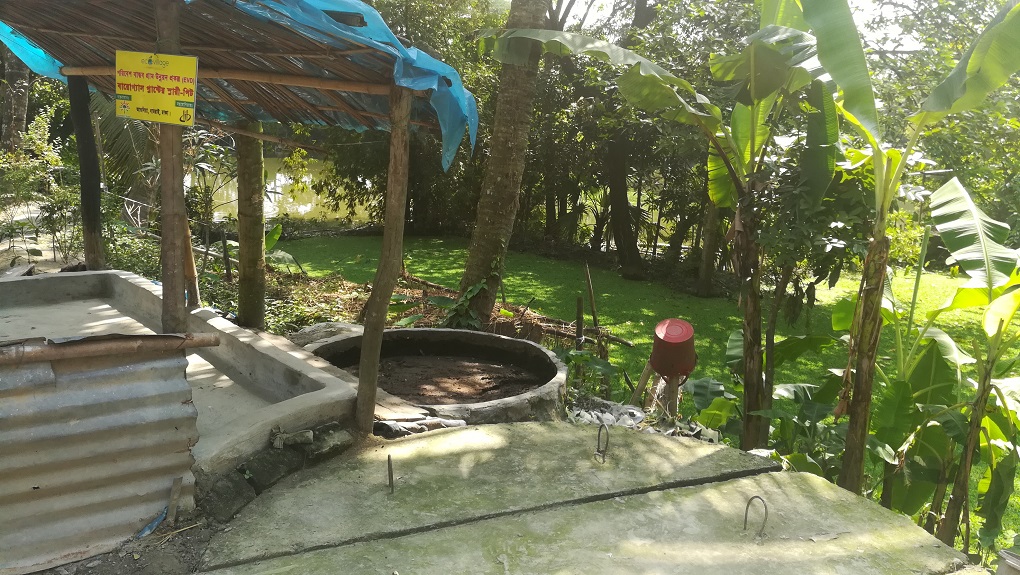Cooking with wood burners is common in Bangladesh’s rural villages, but the norm has been changing gradually over the last few years. Many women have been moving to biogas stoves, which allow for smokeless cooking and produce a useful by-product: bio-slurry, which can be used in agriculture and pisciculture. Some households also dry out the bio-slurry to sell as raw materials to others who are still using traditional burners.
Ashulia, only 50 kilometres from Dhaka is one such rural village in this energy-thirsty country where such transitions are being made. Out of around 50 households in the village, 35 have already converted to biogas burners, using waste from their cows and poultry.
Beauty Akhter was one of the first to make the change. She stopped using a traditional burner for daily cooking five years ago, and installed a 3.2 cubic feet capacity biogas chamber. She uses raw materials from her three cows.

Shahnaz Parvin, who has been using the biogas burner for last two years, uses the bio-slurry by-product as fish food in her family’s fishing pond.
“Since setting up the biogas plant in my home, I have been using the slurry as fish-feed by connecting a direct pipeline to the pond, from where my family earns around BDT 100,000 (USD 1,213) annually,” she said.

With the aim of using biogas properly and reducing energy loss, Bangladesh opened the first biogas-based cooking plant in 1975, but the project only geared up in late 1990s.
The Bangladesh government is providing subsidies to set up 44,000 biogas plants through the Infrastructure Development Company Limited (IDCOL), which provides clean energy to around 200,000 people.
More interested groups
Many others, who are not yet using biogas burners, are planning to set up the green technology.
“My family is planning to set up a plant, because we feel that using the conventional burner is hectic and time consuming – a person needs to stand by the burner to control the biomass load,” says Laila Begum. “But in the case of the biogas burner, no one needs to be there while cooking as it’s nearly the same to the gas or electric burner.” The only problem is the space it requires, she added.

“Despite the interest, many of the households are unable to install the plant for their own household because of either inadequate space or the absence of poultry or a cattle farm,” Mohammad Mahmodul Hasan, manager of Grameen Shakti told thethirdpole.net.
Plans ahead
Bangladesh plans to increase the stake of renewable energy production by 10% by 2030, and has prepared a year-based plan to achieve this goal. Wind resource mapping is happening in 13 places and several wind power projects are expected to start by the end of 2017. Meanwhile, SREDA has started piloting work in several areas, including solar irrigation projects, solar rooftop systems and surveys on biogas and biomass fuels.
Siddique Jobaer, a member of SREDA, told thethirdpole.net, “We have plan to continue the subsidy for setting-up biogas plants for more year as we want to increase the use of sustainable energy in rural Bangladesh.”
Abu Siddique is a Dhaka based journalist
We want to hear from you! Tell us what you think about The Third Pole and you could win $100. Take our survey here.
![<p>Using biogas leads to smokeless kitchens, a huge boost to women’s health who normally have to use traditional wood burning stoves like this one [image by: Abu Siddique]</p>](https://dialogue.earth/content/uploads/2017/10/Cooking-with-traditional-stove-runs-by-bio-mas.jpg)
